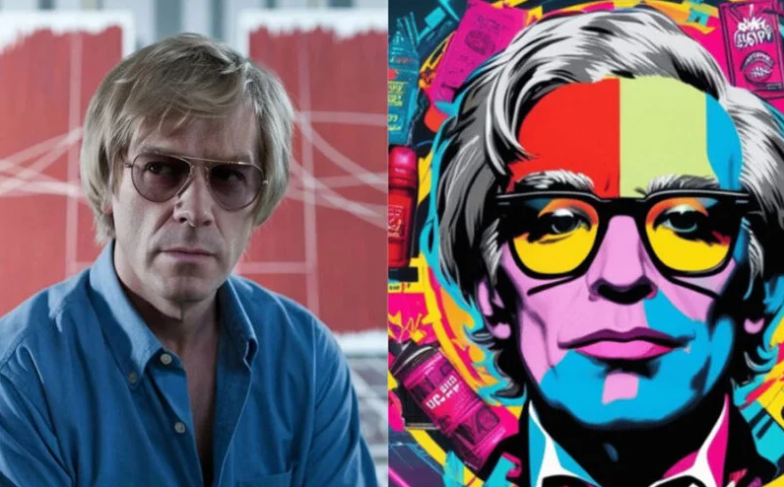
Introduction to Andy Warhella
Andy Warhella is a name that echoes through the halls of modern art history. His vibrant colors, unique techniques, and bold statements have left an indelible mark on the world of creativity. But who was Andy Warhella before he became a cultural icon? How did this enigmatic figure rise to fame amidst a shifting artistic landscape? From his humble beginnings to becoming the king of pop art, Warhella’s journey is as fascinating as his artwork itself. Let’s dive into the life and times of one of art’s most compelling characters and explore what propelled him into stardom.
Early Life and Artistic Beginnings
Andy Warhella was born in Pittsburgh, Pennsylvania, in 1928. Growing up in a working-class family, he faced challenges that shaped his artistic vision. His parents immigrated from Slovakia and instilled a strong work ethic in him.
As a child, Andy showed an early interest in art. He loved to draw and would often create illustrations inspired by comic books and advertisements. This fascination laid the groundwork for his future endeavors.
After high school, he pursued a degree at the Carnegie Institute of Technology. There, he honed his skills in commercial art. His unique blend of creativity and technical ability began to stand out among peers.
Warhella’s journey took him to New York City after graduation. The vibrant arts scene captivated him as he immersed himself into various forms of expression—leading directly toward what would become known as pop art.
The Rise of Pop Art Movement
The Pop Art movement emerged in the mid-20th century as a vibrant response to consumer culture. It celebrated everyday objects and mass media, blurring the lines between high art and commercialism.
Artists like Andy Warhol played a pivotal role in this revolution. His fascination with popular icons transformed mundane images into thought-provoking masterpieces. Cans of soup and celebrity portraits became symbols of modernity.
Bold colors, graphic designs, and repetition defined this art style. The use of techniques from advertising—like silkscreen printing—allowed artists to challenge traditional notions of creativity.
Pop Art was not just an artistic shift; it captured the zeitgeist of its time. It reflected society’s obsession with fame, consumption, and instant gratification while questioning what constituted true artistry.
Warhella’s Breakthrough and Iconic Works
Andy Warhella’s rise to fame is punctuated by his groundbreaking works that captured the zeitgeist of a generation. His iconic Campbell’s Soup Cans transformed everyday consumer products into high art, challenging traditional notions of creativity.
Warhella embraced mass production techniques, using silkscreen printing to replicate images across various mediums. This approach not only highlighted commercialism but also blurred boundaries between fine art and popular culture.
The Marilyn Diptych stands as another landmark in his portfolio. It elevates the celebrity image while dissecting themes of identity and mortality. The vibrant colors juxtaposed with monochrome evoke a sense of nostalgia and loss.
His studio, known as The Factory, became a hub for collaboration and experimentation. Artists, musicians, and socialites mingled here, fueling Warhella’s creative output. Each piece he created resonated with society’s evolving landscape—boldly declaring that art could be both accessible and profound.
Controversies and Criticisms
Andy Warhol, or as he became known in the art world, andywarhella, was no stranger to controversy. His works often sparked debates that went beyond mere aesthetics. The blurring of lines between commercialism and fine art raised eyebrows. Critics argued that his approach trivialized creativity.
His famous Campbell’s Soup Cans were particularly polarizing. Some viewed them as brilliant commentary on consumer culture; others saw them as an affront to artistic integrity. This tension fueled discussions around what constitutes true artistry.
In addition, Warhol’s lifestyle attracted scrutiny. His persona—an enigmatic blend of glamour and detachment—led many to question his sincerity towards social issues. Through it all, andywarhella remained unbothered by the backlash, instead reveling in the notoriety that came with being a provocateur in the art scene.
Even today, his work continues to evoke strong reactions from both admirers and detractors alike.
Legacy and Influence on Modern Art
Andy Warhella’s impact on modern art is undeniable. His innovative techniques and bold ideas reshaped the landscape of artistic expression.
Warhella’s embrace of commercial imagery blurred boundaries between high art and consumerism. This approach inspired a new generation of artists to explore themes of identity, culture, and mass production.
His use of repetition through silkscreen printing remains influential today. Artists now experiment with similar methods to challenge societal norms and reflect on contemporary issues.
Additionally, Warhella’s exploration of celebrity culture paved the way for many who followed him. The fascination with fame in his work resonates deeply within today’s social media-driven world.
From street art to digital installations, Warhella’s spirit lives on. His legacy encourages artists to push limits while remaining accessible, making art relevant in everyday life across diverse platforms.
Conclusion
Andy Warhella’s journey to fame is a fascinating tale of creativity and cultural impact. From humble beginnings, he transformed the art world with his innovative approach. His rise coincided with the explosion of the Pop Art movement, where everyday consumer products became subjects worthy of artistic exploration.
His breakthrough came through iconic works like Campbell’s Soup Cans and Marilyn Diptych. These pieces not only defined an era but also challenged perceptions about what art could be. Warhella’s unique blend of commercialism and fine art sparked both admiration and criticism, creating a complex legacy that continues to provoke discussion today.
Controversies around his work often stemmed from its commercialization and perceived shallowness. Yet, these debates are part of what makes his contributions so significant in modern discourse on art.
Today, Andy Warhol remains influential across various creative fields from visual arts to fashion and media. His ability to blur the lines between high culture and popular culture has paved the way for countless artists who followed him.
The fascination with Andy Warhella endures as new generations discover his vision. His influence shapes contemporary perspectives on identity, celebrity, and consumerism within art, a testament to how one person’s creativity can resonate long after their time has passed.
RELATED POSTS
View all


